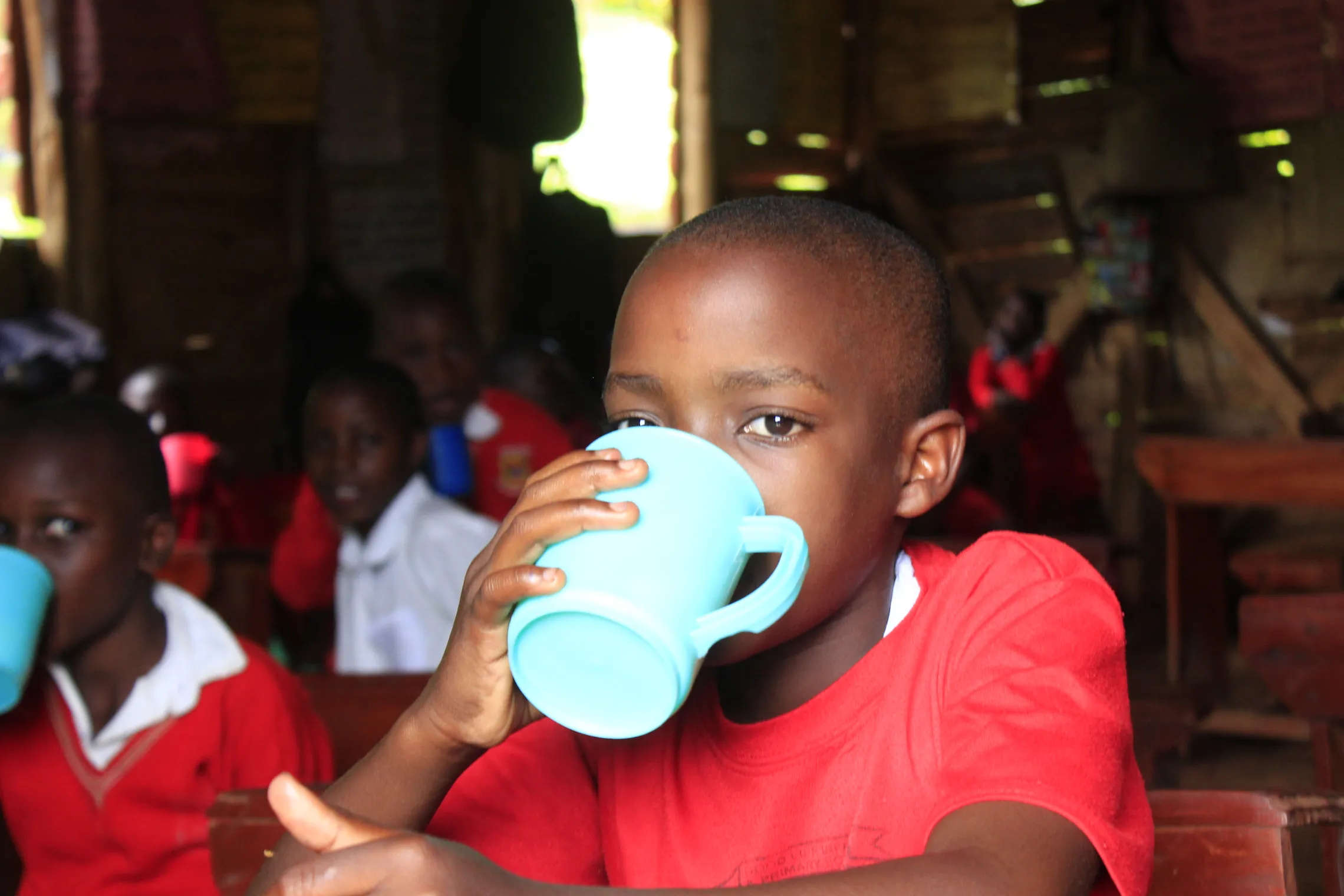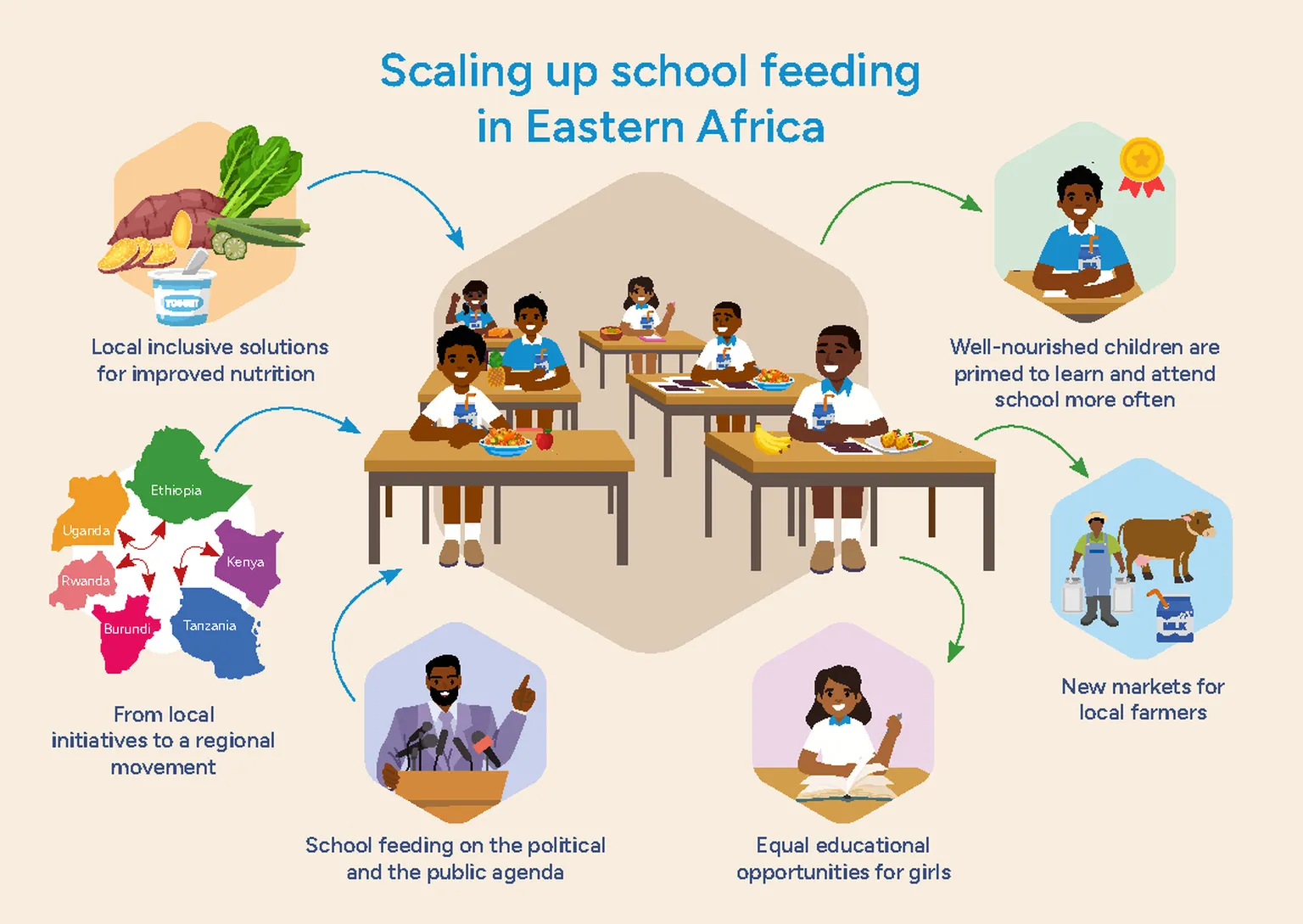
SNV at the 2nd Global Summit of the School Meals Coalition
Join us on 18–19 September 2025 in Fortaleza, Brazil, as we present home-grown school feeding approaches at the summit.
From meals to systems
Across many African countries, a school meal has become essential to a child’s day. It may be where they receive their only proper meal—and it often determines whether they attend school at all.
But what if school meals were more than a safety net? What if they were seen, and funded, as essential public infrastructure—embedded in systems that support education, local food economies, and climate resilience?
As hunger rises, budgets tighten, and food systems buckle under climate pressure and inequality, we must shift our approach. SNV believes that Home-grown school feeding (HGSF) has the potential to deliver across multiple sectors. But only if we move past fragmented pilot projects and start treating school meals as a structural investment.
Learning from East Africa
Since 2015, SNV has supported scalable school dairy programmes in Uganda and Ethiopia aimed at improving children’s access to nutritious milk and yoghurt, while creating local market opportunities.
In Uganda, we’ve seen how coordinated local delivery models can scale: by 2023, nearly 1 million children were reached, while over 20,000 smallholder farmers gained access to a new and reliable market.
In Ethiopia, concerns around milk quality and cost required a different approach. We tested a tailored subsidy model, grounded in local realities. By July 2024, 81,400 students in public schools had been enrolled.
These experiences show the importance of adapting to context, engaging stakeholders, and linking school feeding directly to local food systems.
)
A shared vision for strengthening home-grown school feeding in East Africa
The regional visioning workshop attended by partners across East Africa agreed: we can only enhance impact through collective action across key areas to strengthen school feeding efforts.
Partners agreed to focus on strengthening core themes to make home-grown school feeding (HGSF) more sustainable, equitable, and effective:
Optimising sourcing and supply chains
Home-Grown School Feeding (HGSF) has long been recognised for its potential, but challenges remain in the quality, quantity, and reliability of local supply. Building on our experience in value chain development, SNV supports transparent and inclusive procurement systems that link smallholder farmers to structured demand. We partner to establish clear accountability mechanisms to strengthen supply chains and ensure equitable participation.

Supporting sustainable production and food system transformation
In many regions, agricultural systems are under pressure from climate change, biodiversity loss, and soil degradation. School feeding can be leveraged as an entry point to promote regenerative agriculture, improve biodiversity, and strengthen climate-resilient practices. By supporting farmers to adopt sustainable methods and diversify production, HGSF can drive healthier diets, restore ecosystems, and contribute to long-term climate adaptation and mitigation.
Promoting clean cooking and renewable energy
School feeding should not come at the cost of our environment and health of cooks. SNV supports the shift to clean cooking using renewable energy for institutional kitchens and sustainable biomass management mechanisms for rural and remote areas. These methods lower emissions, enhance health outcomes, and ensure school feeding aligns with wider climate action and energy access goals—particularly in rural and off-grid areas.
Leveraging innovative finance and community ownership
Scaling school feeding to reach every child will require greater investment than what is currently available. We see potential in innovative and blended finance mechanisms, combined with stronger community ownership. By strengthening regional partnerships and aligning government-led, community-led, and humanitarian efforts under strong national policies, we can scale nationally proven models to new contexts—ensuring healthy outcomes for every child.
SNV is committed to advancing a regional approach to more sustainable and inclusive school feeding systems.
Our call to action
Nutrition must be a core pillar of climate resilience—integrated into national planning, measured with meaningful indicators, and supported by systems that connect food, water, education, and health.
We call on national governments to
Strengthen sustainable school feeding policy implementation
Recognise home-grown school meals as a multisectoral investment in human capital and
Develop clear pathways linking school feeding to local food systems transformation, improved nutrition, and rural economic growth.
Grounded in local ownership and regional collaboration, that is how we build resilient futures—one meal at time.
